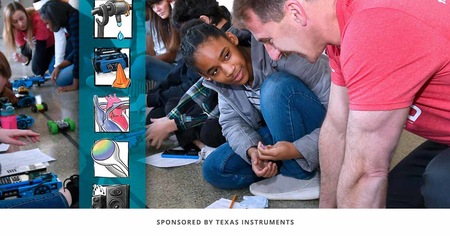Did your experiment work?
This is an example of a closed-ended question. It can be answered with one word, often a simple yes or no. It does not invite discussion or creativity. The answer to a closed-ended question is predictable and often structured by the question. Young people are conditioned by closed-ended questions to stop thinking and instead try to guess what the teacher's preconceived ideas are. Closed-ended questions have a place for testing factual recall, but they do not encourage high-level thinking.
How do you know your experiment worked?
This is an example of an open-ended question. An open-ended question has more than one answer and invites thought and discussion. Open-ended questions provide young people with the freedom to express their ideas and they generate conversation. Instead of predictable answers, open-ended questions elicit fresh insight and ideas, opening minds and enabling you and your young people to build knowledge together. Open-ended questions engage young people in dynamic thinking, where they must synthesize information, analyze ideas, and draw their own conclusions.
5 TIPS FOR CULTIVATING CREATIVITY AND CURIOSITY
1. Create a question list.
Old habits can be hard to break. To help you create better questions, make a list of generic open-ended questions that can be posted on the wall or carried on note cards in your pocket.
The following is a list of STEM focused open-ended questions that can inspire creative thinking.
What patterns did you notice?
Why do you think this happened?
What else might have caused that?
What did you expect to find and why?
How was it different this time?
Describe what you saw?
Is there another explanation?
What evidence do you have?
What are your assumptions?
How will you know if your experiment works?
How do you think you could make it better?
How did you decide on your method?
Why did you do it that way?
What is your hypothesis?
2. Set expectations.
You want to foster cooperation, not competition. Encourage young people to respect everyone's ideas. Ensure that everyone has a voice and can be a participant. Use words and model behaviors that foster teamwork. Initially the expectations of open-ended questions can be stressful when shared in front of the whole group. Start by using a policy of Think Pair Share. When you ask a question, have the young people pair up to discuss the answer. Slowly promote discussion between the groups until everyone feels safe enough to take part in a large group discussion. Try to make opened-ended discussions part of all of your activities.
3. Be curious and listen.
For open-ended questions to be effective, it's critical to ask them with real curiosity and interest. Your engagement and attitude will draw kids into discussions where you might learn more than they do. Remember to make use of wait time. After asking a question, wait 10 seconds to allow young people to think about and answer your question before providing any prompts. Do not be too quick to referee the correct the answer.
4. Two-question rule.
Because open-ended questions tend to be general, young people tend to answer in a general way and use general adjectives to describe their situations and opinions. Follow a question with another question that probes for deeper understanding. Second questions should probe for clarity or additional information. For example, "How do you know your experiment worked?" could be followed up with, "How do you think you could make it better?" The goal is to have the children think about their activities and the reasoning behind their answers.
5. Practice, practice, practice.
Give yourself time to implement open-ended questions and be successful!
Written by Andy the Science Wiz, NAA STEM Specialist Andy Allan.




